The Most Popular Menswear Style the Year You Were Born

From the slim lapels of the ’50s through the loud-and-proud patterns of the ’70s all the way to the angsty flannel of the ’90s, we’ve pulled together the most popular menswear styles, year-by-year, from the latter half of last century. So read on—and be inspired to upgrade your own closet. And if you’re curious about what’s cool today, don’t miss these 20 Men’s Style Trends You Should Actually Try in 2019.
1945: Pinstripe Suit

The ’40s were all about the big bold suit, but pinstriped iterations were especially popular due to the rise of Italian American gangster films. Hollywood widely popularized the style with films like 1945’s Dillinger, where pinstripe suited wise guys left a big sartorial impression. And for more blasts from the past, check out these 100 Slang Terms From the 20th Century No One Uses Anymore.
1946: Knit V-Neck Vests

Though head-to-toe formalwear was big in the ’40s, the knitted V-neck sans blazer or jacket became a common look sported by many urbanites, especially among those assimilating back to postwar home life. And if you’re not sure what old items still look good, check out the 40 Horrendous Style Mistakes Men Over 40 Can’t Stop Making.
1947: Pleated Trousers
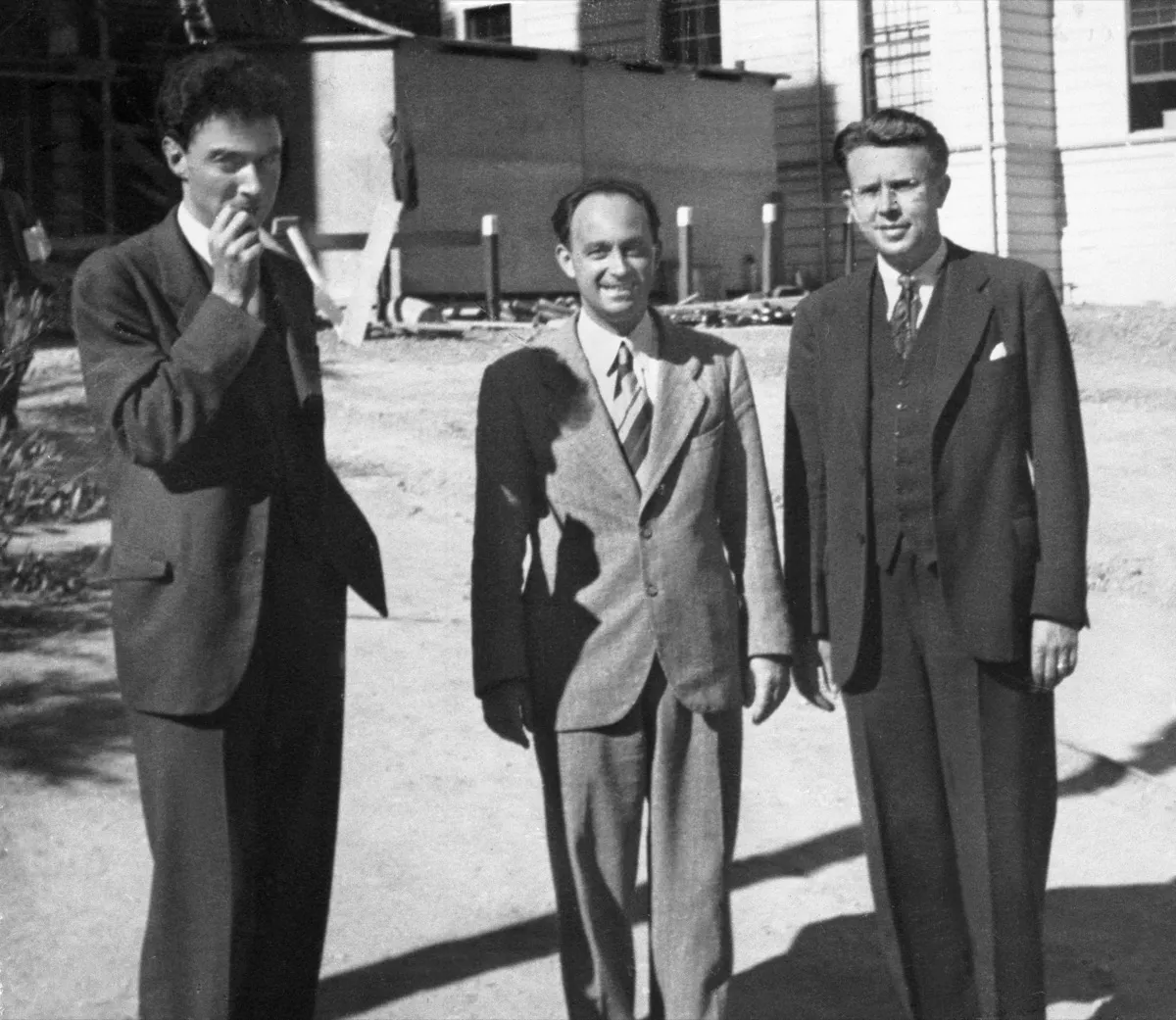
The prominence of formalwear in the ’40s saw pleated pants become a regular for many men. Glance at nearly any photo of a suited man in 1947 and you’ll be sure to spot a pleat in his pants. And for some more modern fashion advice, don’t miss these 40 Common Style Tips Men Should Always Ignore.
1948: Zoot Suit

The zoot suit—characterized by its high-waistline, wide-legged cut, tight-cuffed and pegged trousers, and a long coat with wide lapels and wide padded shoulders—was one of the most popular suiting styles from the ’40s. It was especially popular among jazz musicians and swing dancers (in other words: the most stylish cadre ever).
1949: Patterned Ties

As leisure suits and casual clothing grew in popularity, ties with colorful patterns started gaining traction. Many fashion glossy mags at the time championed the trend, and it even scored an editorial in the venerable pages of Harper’s Bazaar.
1950: Edwardian Revival

Fashion glossy Harper’s Bazaar ran an article in 1950 titled “Return of the Beau,” claiming that Edwardian-era menswear was being revived for modern times by the tailoring experts on Savile Row. The look included a slightly flared jacket, natural shoulders, and an overall narrower cut, worn with a curly-brimmed bowler hat and a long slender overcoat with velvet collar and cuffs. Next, check out these 20 Photos Only Kids Who Grew up in the 1950s Will Understand.
1951: Hawaiian Shirt

The floral Hawaiian shirt became a vacationing staple in the ’50s—even President Harry S. Truman was a fan, evidenced by his spot on the December 1951 cover of Life magazine.
1952: Beatnik
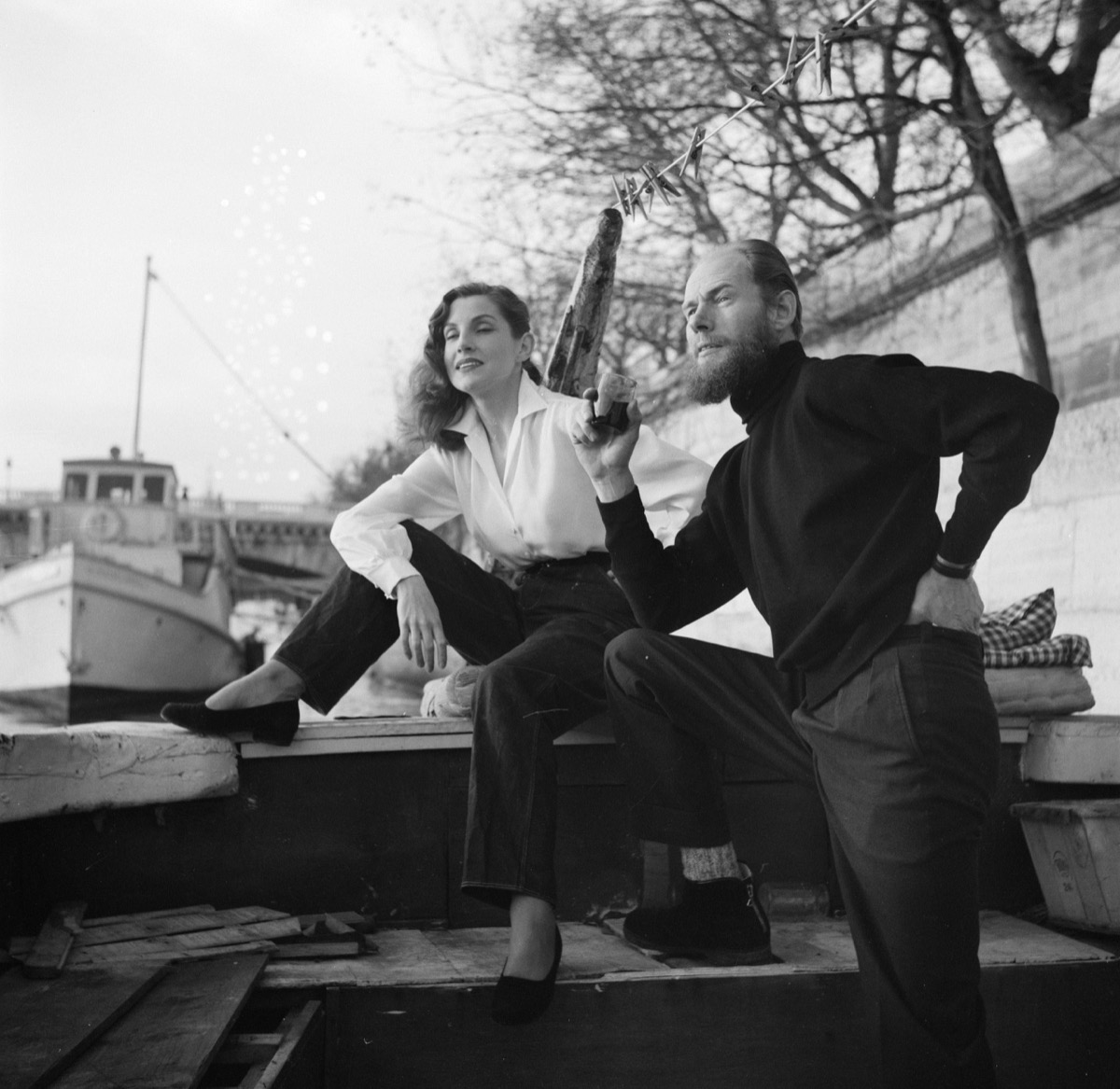
Jack Kerouac’s famous 1952 novel On the Road heralded a subculture known as the Beatniks, known for their pseudo-intellectualism and bohemian lifestyle. Their look commonly consisted of slim-fitting black clothes, berets, and thick-rimmed glasses.
1953: Biker Jacket

The black leather jacket-wearing, motorcycle riding “greaser” is one of the most iconic subcultures of the ‘50s. Marlon Brando’s memorable role as gang member Johnny Strabler in 1953’s The Wild One popularized the look across the country.
1954: Browline Glasses
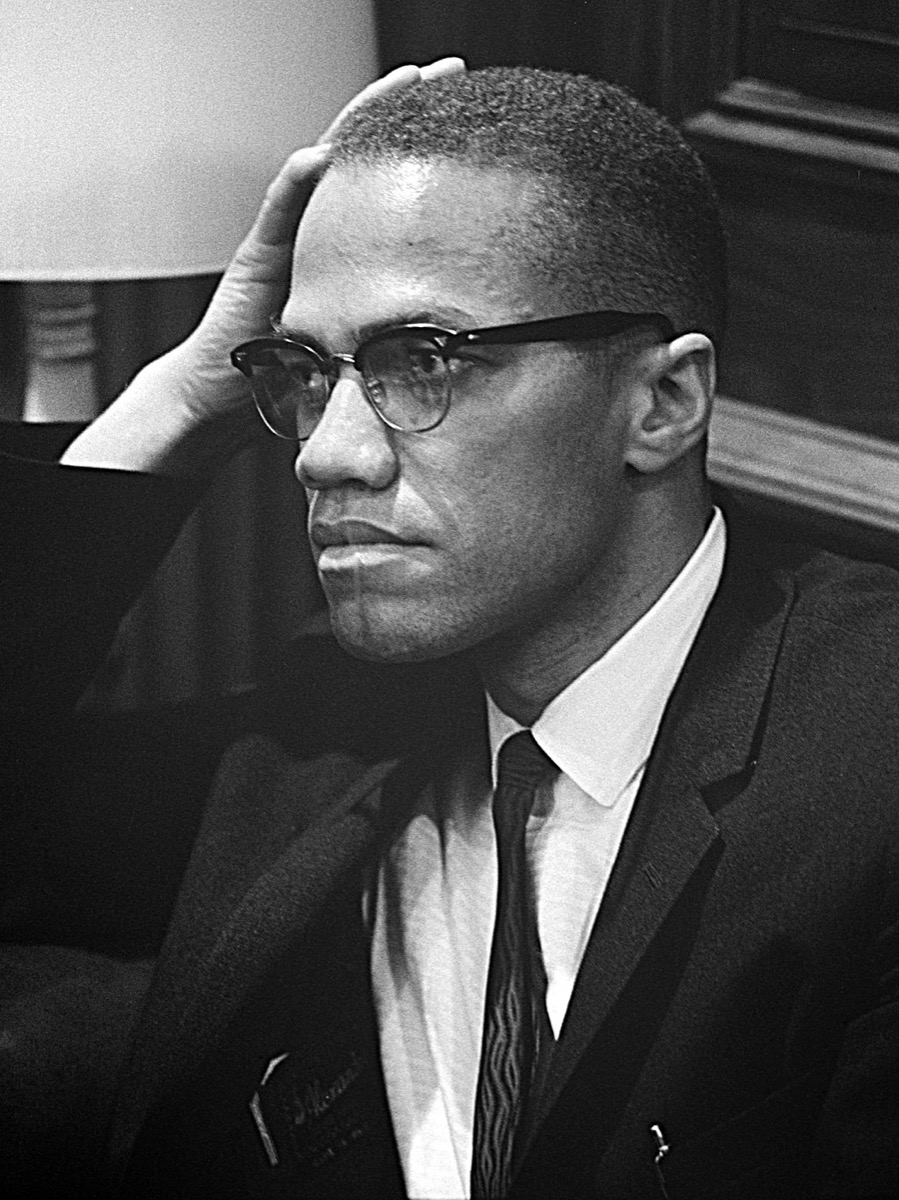
Browline glasses, named after the bold upper part of the frames, were the most popular eyewear of the ’50s. Prominent figures—such as Malcolm X and Colonel Sanders, the founder of Kentucky Fried Chicken—were notable fans of the style.
1955: Harrington Jacket
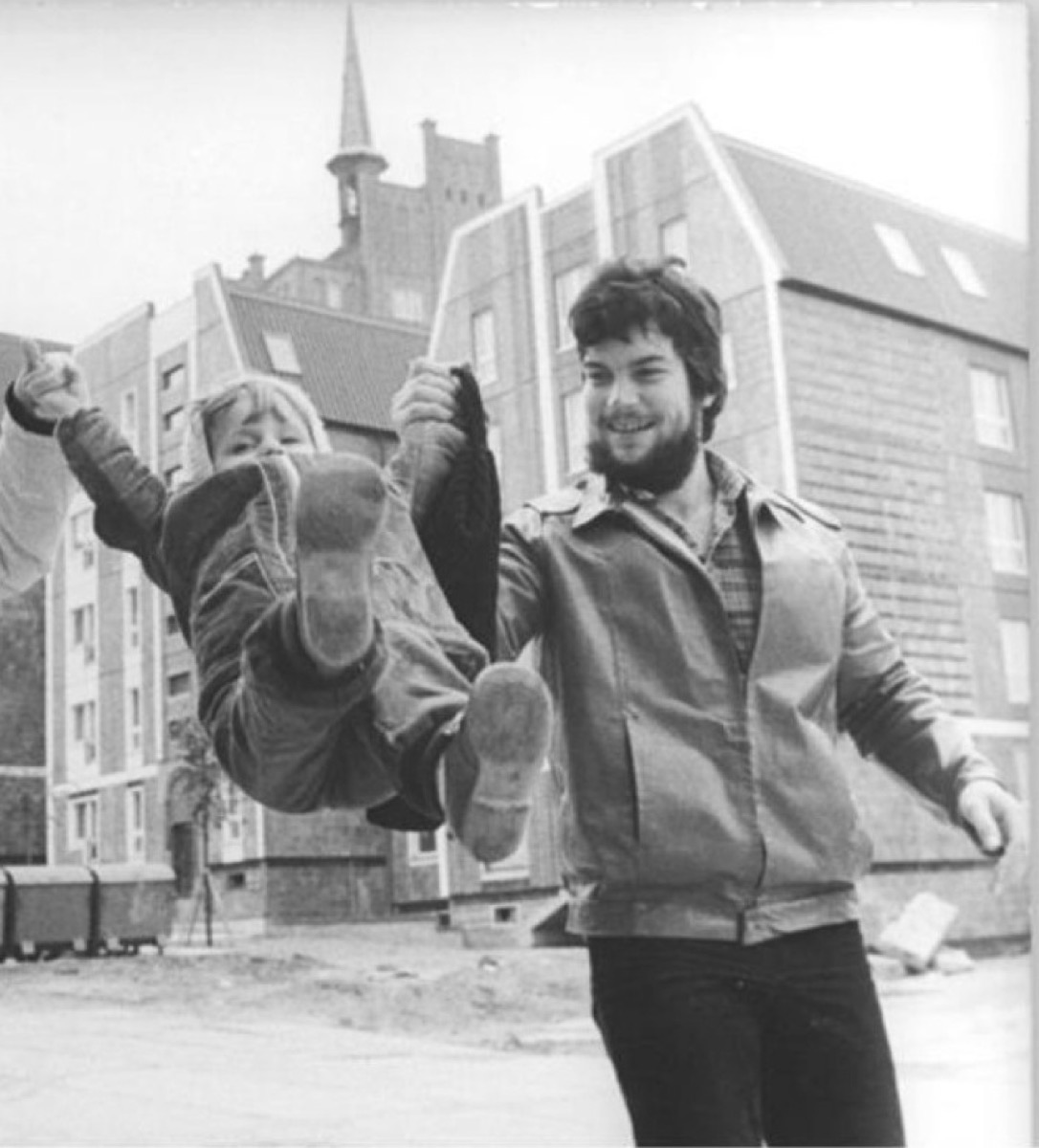
James Dean was the ultimate pop culture icon of the ‘50s, influencing many of the decade’s trends. When the actor famously sported a bright red Harrington jacket in 1955’s Rebel Without A Cause, one of his most lauded films, the outerwear became a widespread staple among many American youths.
1956: Pompadour

Elvis Presley mania officially took hold of the country by the mid-late ’50s. When his debut eponymous album released in 1956, the singer became widely recognized for his influential look, particularly his signature pompadour hairstyle.
1957: “Ivy League” Style

The collegiate style of dress—navy two-button blazers, Oxford-collar button-downs, tons of cable-knit middle layers—which is said to have originated on Ivy League campuses during the mid-50s, was widely popularized by the nation’s upper class. According to a 1957 New York Times article, about 70 percent of all suits sold were in the “Ivy League” style in 1957 and 1958.
1958: Fedoras

Hats in general were commonly worn throughout the decade. One of the more popular headwear styles, the fedora, was endorsed by popular figures like Frank Sinatra and Carey Grant.
1959: Western-wear

Western clothing was another big ’50s trend, thanks to the rise of rockabilly, greaser, and rock-n-roll subcultures. Roy Rogers was another influential pop figure from the decade known for his trademark cowboy getup.
1960: Continental Suits

Spiffy suited looks were all the rage among early ’60s icons such as Sean Connery and members of the Rat Pack, including Frank Sinatra, Dean Martin, and Sammy Davis, Jr.
1961: Preppy

A more modern version of ’50s Ivy League fashion saw a rise in prominence during the early ’60s. Polo shirts, chino pants, argyle sweater vests, and Nantucket Reds—as made popular by then president John F. Kennedy, who was sworn into office in 1961—became staples for middle-class American men.
1962: Mariner’s Caps

Widely popularized by Bob Dylan, the mariner’s cap was a common headwear sported by various countercultural tribes of the ’60s. The legendary folk singer even wore one on the cover of his 1962 self-titled debut LP.
1963: Surf-wear

Surfing gained significant popularity in the United States between the early to mid-60s. The California rock band, The Beach Boys, solidified the signature surfer lifestyle with their hit 1963 jam “Surfin’ U.S.A.,” leading to a rise in Pendleton jackets, board shorts, and Hawaiian shirts.
1964: White Tuxedo
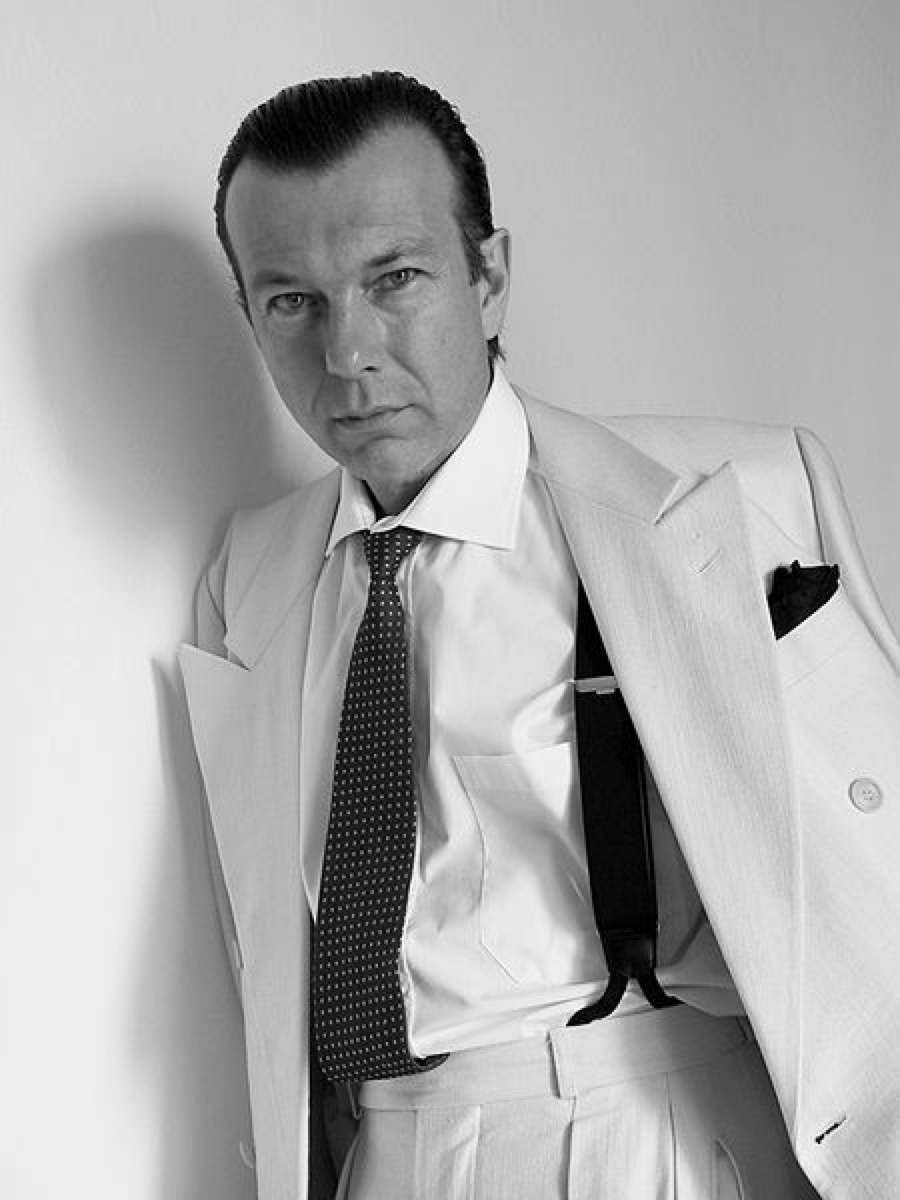
Thanks to the critical and commercial acclaim of 1964’s British spy film Goldfinger, starring Sean Connery as James Bond, the white tuxedo, one of the film’s most memorable looks, became a significant sartorial trope in many fashion ads and films.
1965: Mop Top Hair

With the growing influence of Britain’s mod subculture in America, many young men began wearing mid-length hairstyles. This haircut was particularly endorsed by The Beatles, who at the time became the first rock group to be nominated for the Grammy Award for Album of the Year with their 1965 LP Help!
1966: Mod
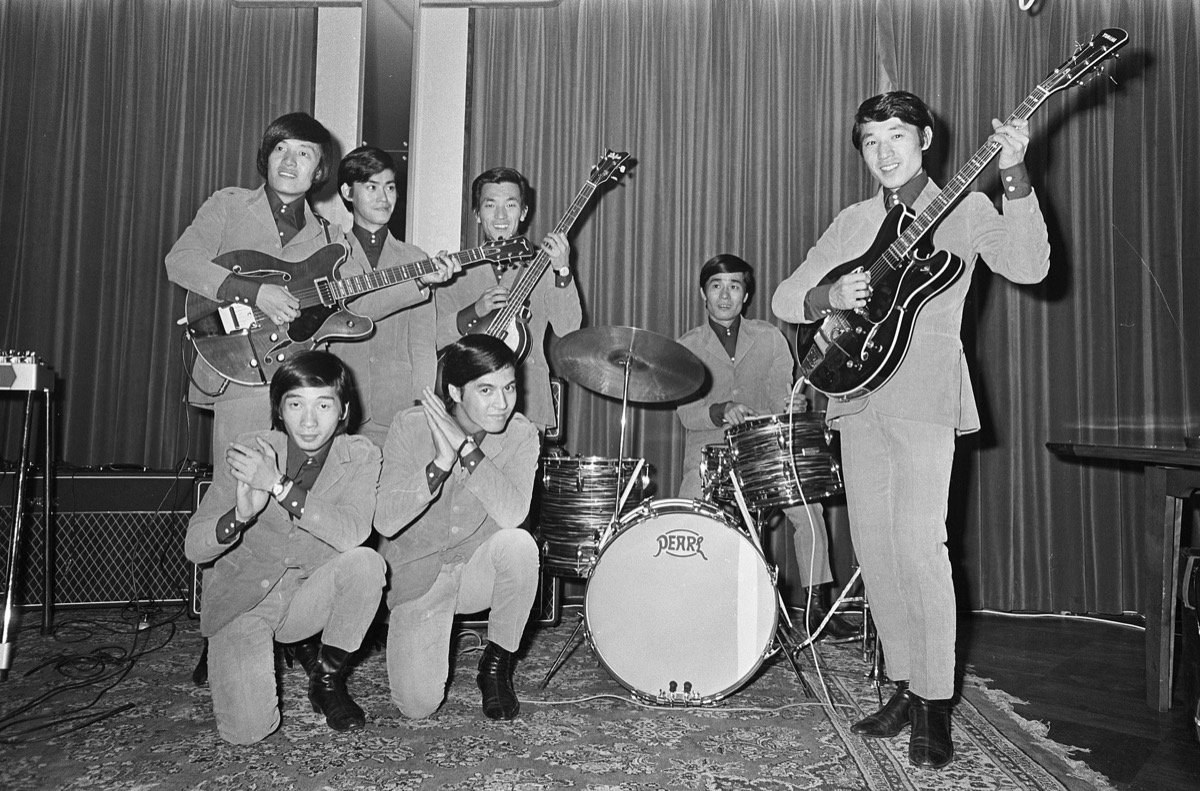
In 1966, Life magazine published an article titled “Revolution in Men’s Clothes: Mod Fashions from Britain are Making a Smash in the U.S.” The mainstream success of mod fashion—which consisted of dandy tailoring, Chelsea boots, and slick-combed hair—was in part due to the rising stock of British bands like The Beatles, The Who and The Kinks, who popularized the look.
1967: Paisley Shirts
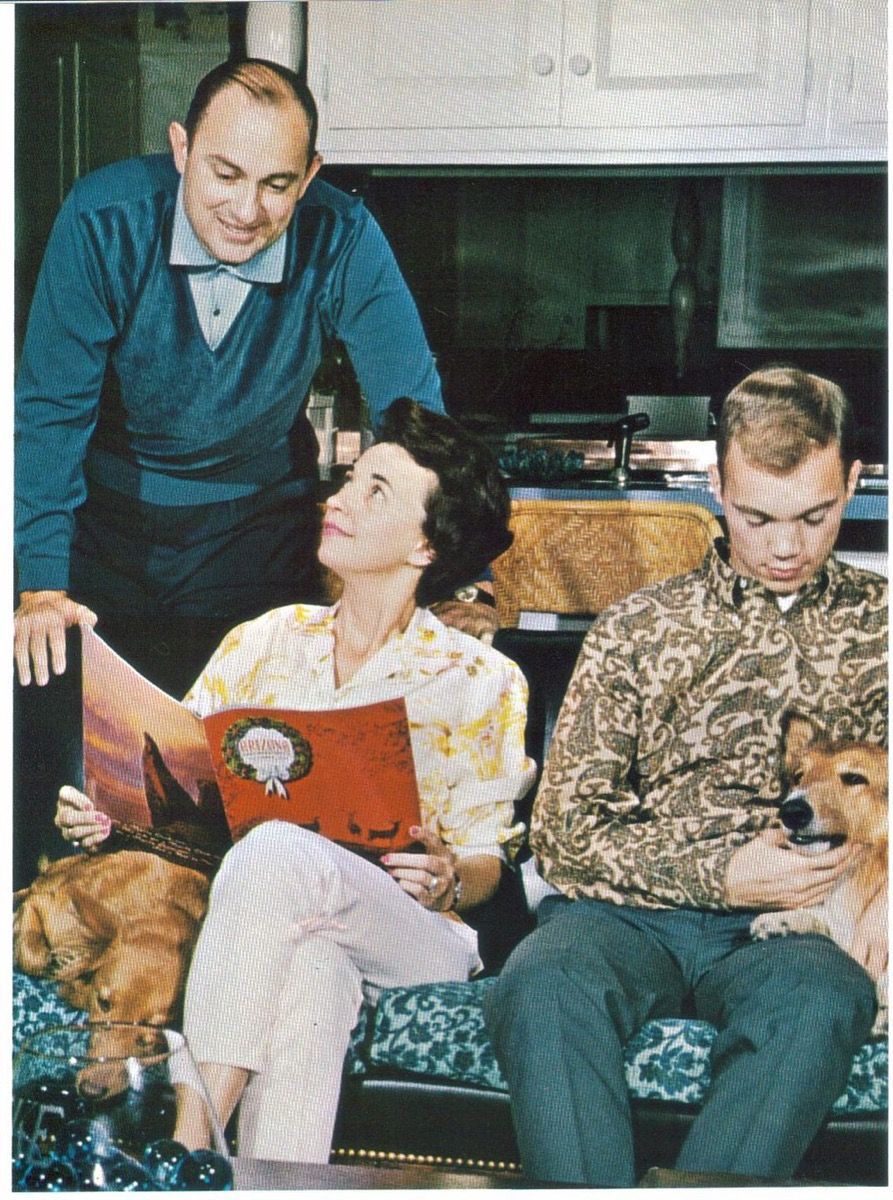
Colorful prints were frequently worn in the mid to late ’60s, especially paisley. Ebony magazine published a trend article in 1967, which stated: “Giant paisley print reflects the brightness of Acapulco and the colors—torero red, Pacific blue, and Mexican maize—are as zesty as a bowl of chili. Green and gold medallioned [sic] sport shirt is worn with Van Heusen’s chili cardigan.”
1968: Crushed Velvet

The late ’60s was marked by the “Peacock Revolution,” heralding a return of flamboyant Edwardian suits in unique fabrics and patterns. Crushed velvet became a trademark look for many musicians in rock music at the time, including the Rolling Stones and Jimi Hendrix.
1969: Hippie

The legendary Woodstock festival took place in the summer of ’69, becoming the ultimate gathering for the decade’s peace-promoting, tie-dye-loving hippie subculture. Other hippie touchstones included bell-bottom jeans, fringe vests, and headbands.
1970: Military Surplus

With the ongoing controversy surrounding the Vietnam War and the popularity of that year’s war-themed films, M*A*S*H and Patton, men developed a growing interest in military surplus clothing.
1971: Oval Glasses
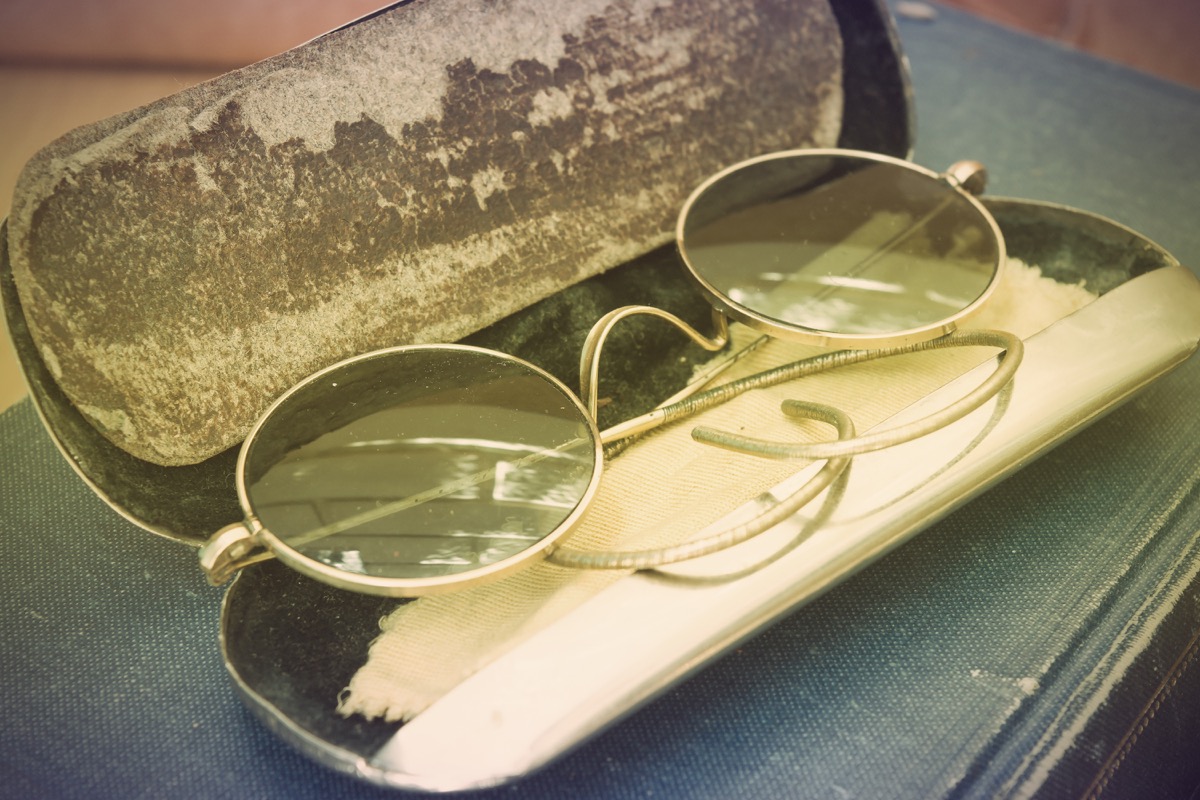
Beatles mania dominated the ’60s and a good portion of the ’70s. The band’s most popular member, John Lennon, embarked on a solo career in 1970, and his single “Imagine” topped the charts that year. A widely influential political activist and an icon of the hippie movement, Lennon’s fashion sense, particularly his oval eyeglasses, was widely adopted by many like-minded youths.
1972: Sideburns

Sideburns gained new connotations in the late 1960s and early 1970s among youth subcultures such as hippies and skinheads. Pop culture icons such as Steve McQueen, Burt Reynolds, and Elvis Presley were also famous for the facial hairstyle.
1973: Glam Rock

Androgynous glam rock fashion was ultra popular among British and American youth, marked by embroidered Western shirts, platform boots, satin robes, velvet sport coats, and other flashy fabrics and patterns. David Bowie was considered a symbol of the style, especially with his Ziggy Stardust tour, which lasted from 1972-1973.
1974: Quasi-European Suit
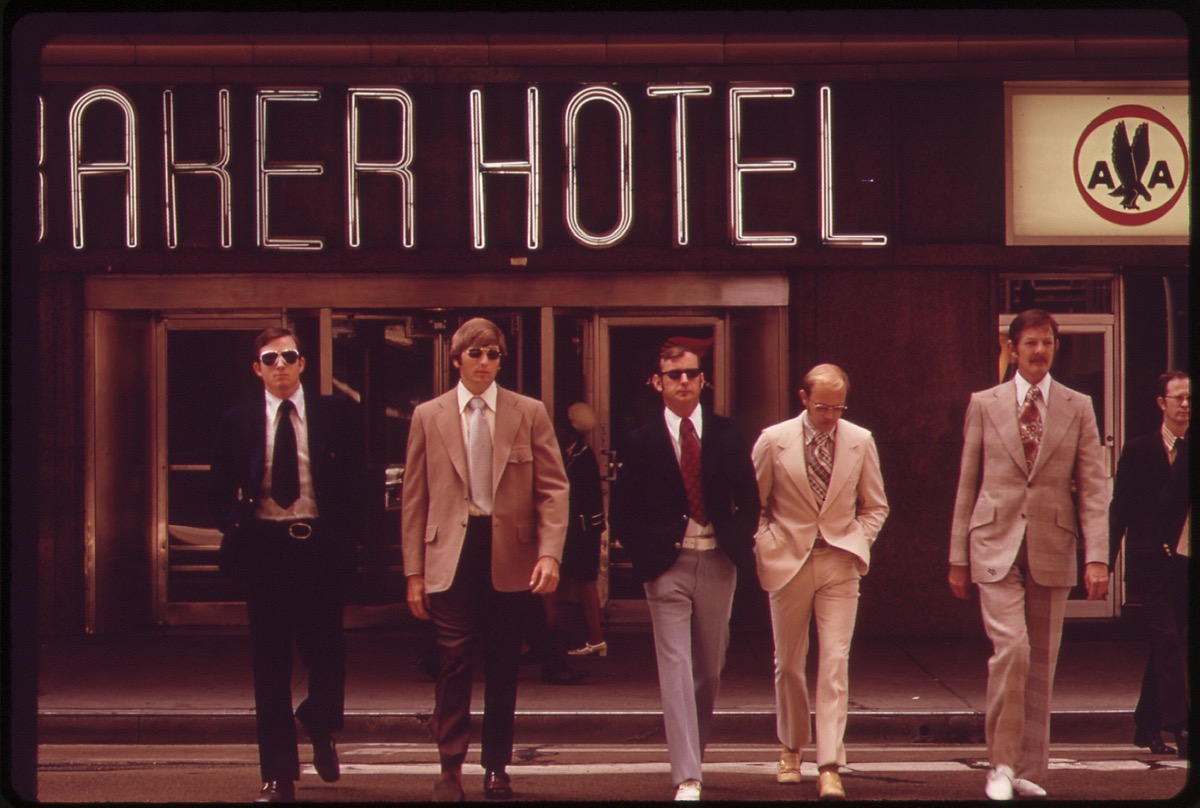
By 1974, American suits started to resemble their European counterparts. They were slimmer, featured padded shoulders, higher arm holes, a smaller waist, open patch pockets, and a small flare to the pants and jacket.
1975: Mood Rings

Keeping with the era’s penchant for bohemian philosophies and colorful fashions, mood rings became all the rage when they were created in 1975 by two New York inventors, Josh Reynolds and Maris Ambats.
1976: Punk

The aggro-street sensibility of punk fashion roared through the mid-’70s. The Ramones, one of the genre’s pioneers, were a huge style influence in the punk community; on the cover of their self-titled 1976 debut LP, the band wore ripped skinny jeans, low-top sneakers, and black jackets.
1977: Disco

Disco fashion is probably one of the most defining trends of the ’70s. The release of iconic 1977 disco film Saturday Night Fever, starring John Travolta, catapulted the style to the masses; soon enough, everyone was wearing colorful three-piece suits characterized by wide lapels, wide-legged or flared trousers, and high-rise waistcoats.
1978: Heavy Metal

By the late ’70s, rock music started getting louder, angrier, and more theatrical. Fusing the styles of punk and glam, early metal-heads rocked teased hair, leather vests, studded belts, and headbands, as evidenced by Van Halen’s (masters of the craft, onstage and off) 1978 self-titled debut LP.
1979: Kipper Ties

As the ’70s came to a close, clothing started becoming bigger and bolder. Kipper ties, characterized by their extreme breadth and often garish colors and patterns, were a popular accessory, especially with comedians like Max Miller and Jerry Siegal.
1980: Preppy Revival
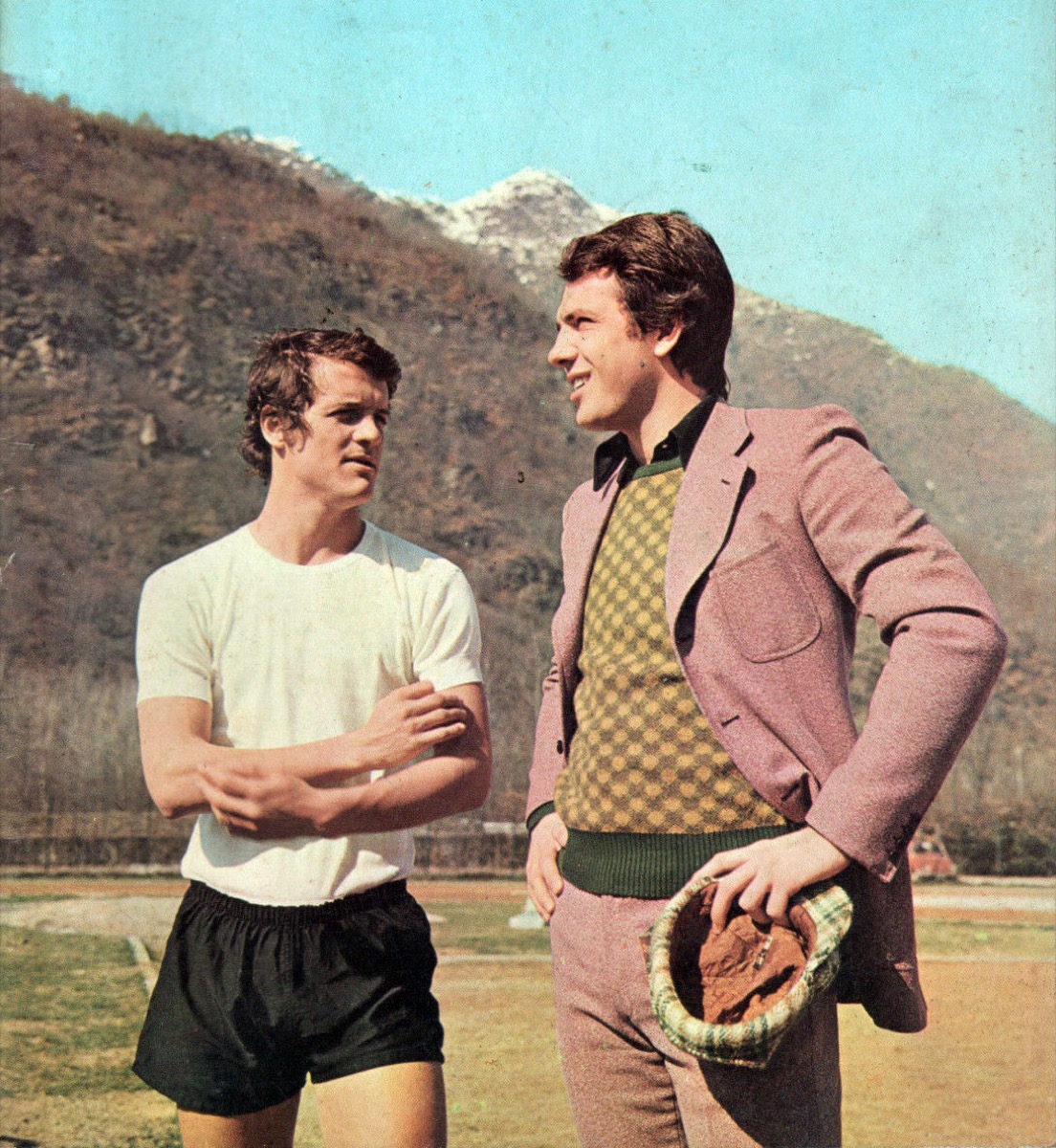
As young career-minded urban professionals began seeping into the workforce, people began expressing disdain towards the laid-back and rebellious attitudes of hippie and punk subcultures. As a result, The Official Preppy Handbook released in 1980, and its success marked the return of throwback Ivy League fashion of the ’50s.
1981: New Wave
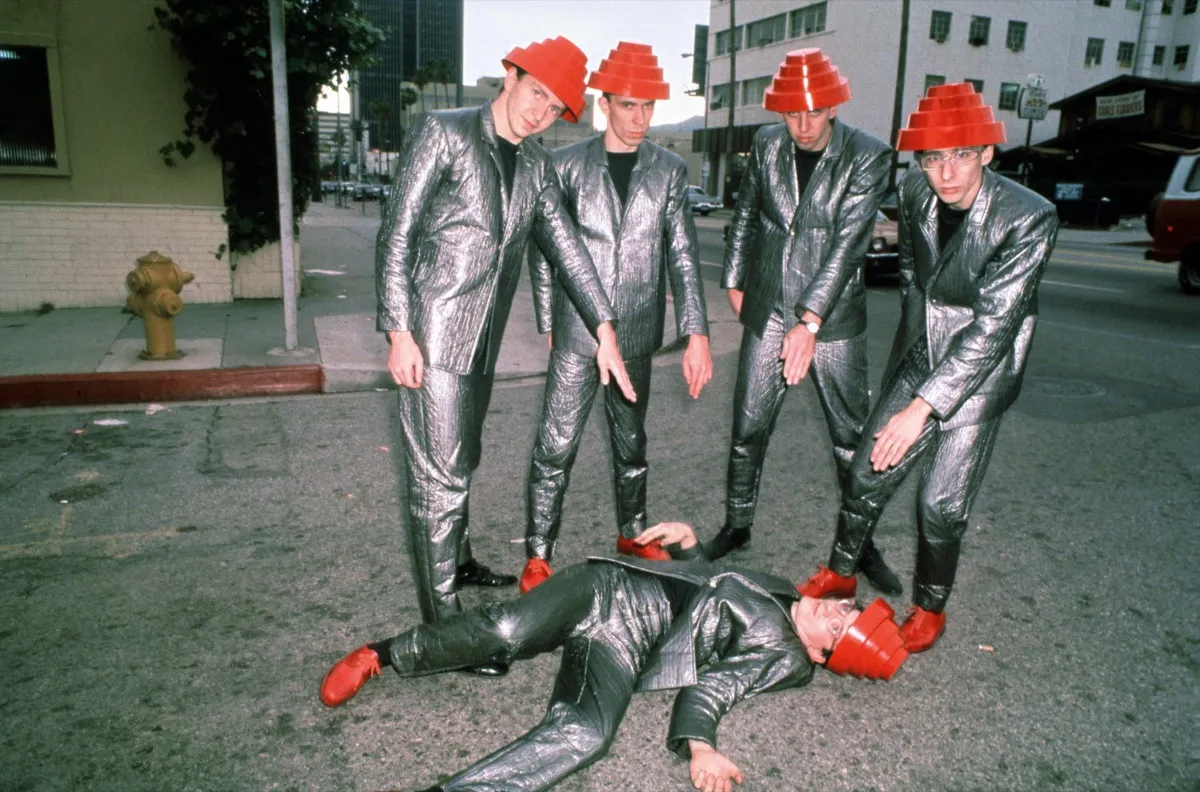
Punk music eventually morphed into the synth-laden, experimental guitar sounds of New Wave music, whose scene was recognized for its slim-fitting suits, thin neckties in leather or bold patterns, striped T-shirts, Members Only jackets, club-wear, metallic fabric shirts, and androgynous neon-colored makeup. The arrival of MTV in 1981 would usher in New Wave’s most successful era in the United States, with bands like Blondie, Devo, and Simple Minds becoming some of the most successful acts of the decade.
1982: Athletic Clothing

As people continued to move away from the disheveled look of hippie fashion, athletic clothes started replacing jeans and leather. Common items worn were tube socks, velour tracksuits, nylon shorts and sports jerseys. The release of Rocky III also contributed to the interest in sportswear.
1983: Red Leather Jackets

Michael Jackson was the ultimate pop icon of the ’80s, trademarking a distinct look and style that would be copied by men and women everywhere. The release of his legendary music videos for “Beat It” and “Thriller” in 1983 catapulted the sales of red leather jackets everywhere.
1984: Air Jordan

In 1984, Nike partnered with basketball player Michael Jordan for its first ever Air Jordan sneaker, the Air Jordan 1. The shoe became an immediate success—and is still worn today.
1985: Miami Vice

American crime drama Miami Vice had one of the most influential impacts on men’s fashion when it debuted in 1984, only to hit peak popularity in 1985. Many cite the show as inventing the “T-shirt under Armani jacket” style as well as popularizing the colorful tailored designs of Italian brands like Giorgio Armani, Gianni Versace, and Vittorio Ricci in American. (Not to mention those signature Ray-Ban wayfarers.)
1986: Safari Jackets

A growing interest in exotic travel saw a rise in tropical fashion, such as the safari jacket. The success of 1986’s Crocodile Dundee popularized the outerwear for many American audiences.
1987: Power Suits

The release of Wall Street in 1987 provided a strong reflection of the types of suits that were popular among businessmen of the era. Dubbed “power suits,” many were defined by wide pinstripes, double-breasted lapels, broad shoulders, and colors that spanned a range from navy to slightly bluer navy. (To be fair, some enterprising individuals wore gray.)
1988: Hair Metal

Drawing heavily from the fashion worn in the glam rock scene of the ’70s, the big-haired stadium rock bands that ruled the hair metal scene were known for their use of make-up, tight denim or leather jeans, spandex and headbands. By 1988, bands like Bon Jovi, Motley Crue, Def Leppard, and Poison were considered pioneers of the style.
1989: Doc Martens

Goth subculture achieved relative mainstream recognition in the late ’80s thanks to bands like The Cure, who released the chart-topping Disintegration album in 1989. Fashion associated with the genre—chiefly, Doc Martens combat boots—were widely sported by many men and women throughout the ’80s and into the early ’90s.
1990: Parachute Pants

MC Hammer’s wildly successful 1991 single “U Can’t Touch This” skyrocketed the popularity of wide-legged pants known as parachute pants, though “Hammer pants” were an exaggerated iteration of the style.
1991: Grunge

The raw hard rock sounds of grunge became one of the most popular music scenes of the ’90s. Grunge style was marked by its blatant anti-fashion look, consisting of beat-up flannel, combat boots, droopy wool sweaters, and ripped jeans. Nirvana’s grunge anthem “Smells Like Teen Spirit” pioneered the look when it was released in 1991.
1992: Hip-Hop

After the success of 1991’s Boys in the Hood, hip-hop music went mainstream. By 1992, oversized baseball jackets, baggy jeans, bomber jackets, Baja Jackets, and tracksuits were popular among young men as casual wear.
1993: Overalls
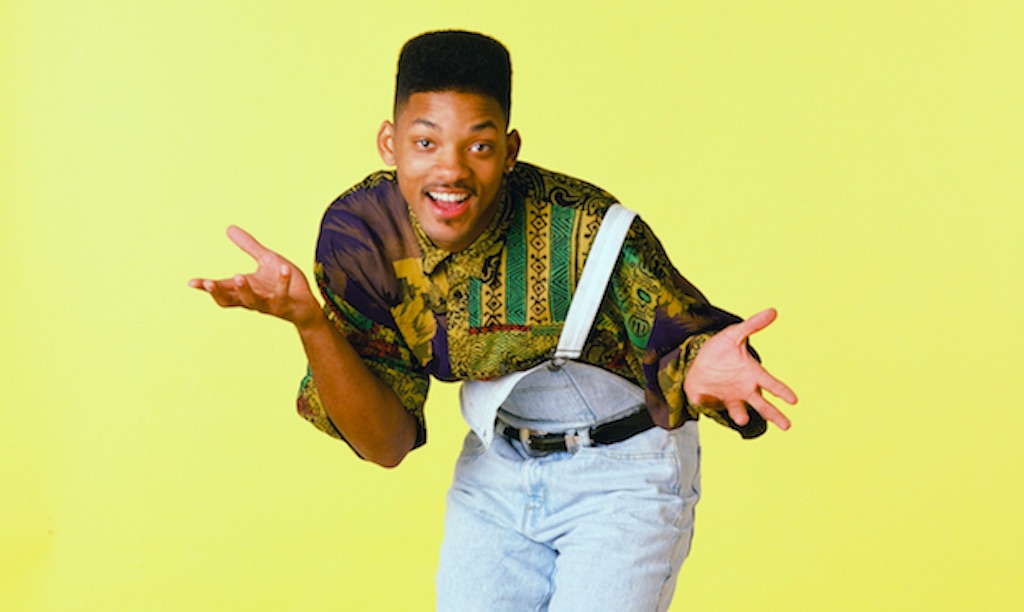
Baggy cuts were a big fad during the early ’90s, as made famous by the growing influence of hip-hop fashion. Tupac Shakur, Aaliyah, and Will Smith’s character from The Fresh Prince of Bel-Air were popular purveyors of overall jeans, which became a defining sartorial touchstone of the genre.
1994: Pajama Chic

The loose fits of business suits and streetwear spawned a style of pajama-tined casual wear that was popular among many Americans. In 1994, Esquire published an article titled “Clark Kent Goes Casual,” which stated: “Lois and Clark’s Dean Cain hangs loose in this spring’s pajama-inspired sportswear, proving that you don’t have to dress like the Man of Steel in the off-hours to look super.”
1995: Modern Preppy

Popular ’90s brands like Gap, Calvin Klein, and Tommy Hilfiger pushed a more minimal, contemporary preppy style that became popular among many young Americans. Solid-colored turtlenecks, khaki chinos, straight-cut denim, and contrast-collar shirts were staples by 1995.
1996: Bowling Shirts

The 1996 film Swingers played a huge influence on men’s fashion, leading to the popularization of the “dressy casual” look. Bowling shirts, worn untucked, became particularly popular because of the film.
1997: ’70s Revival

The United Kingdom’s “Cool Britannia” movement experienced a short but significant run in the United States with the popularity of Brit pop bands like Oasis, Radiohead, and Blur. This resulted in a revival of ’70s fashions: Mod haircuts, aviator sunglasses, denim jackets, Harrington jackets, velvet sport coats, striped shirts, and polo shirts. In March 1997, Vanity Fair published a special edition on Cool Britannia with Oasis’s Liam Gallagher on the cover.
1998: Smart Casual

Bill Gates and Steve Jobs, the tech titans of the ’90s, were particularly recognized for their casual business attire, which generally consisted of blazers and turtlenecks paired with jeans, khakis, and white sneakers. Steve Jobs’s outfit when he introduced the iMac at Apple Expo in 1998 would become a poster child for the smart casual look.
1999: Spiky Hair

Aside from being a popular hairstyle among boy bands like the Backstreet Boys and N*Sync, spiky hair—often with bleached tips—was also a big style takeaway from 1999’s Fight Club, where Brad Pitt’s character Tyler Durden donned the famous spiky look.
2000: Y2K Fashion

The excitement of the new millennium and the popularity of sci-fi films like The Matrix resulted in “futuristic” clothing, consisting of “tech” fabrics, colorful patterns and sportswear in metallic colors. And for some more modern fashion advice, steal these 20 Easy Ways to Elevate Your Style Game Instantly.
To discover more amazing secrets about living your best life, click here to follow us on Instagram!